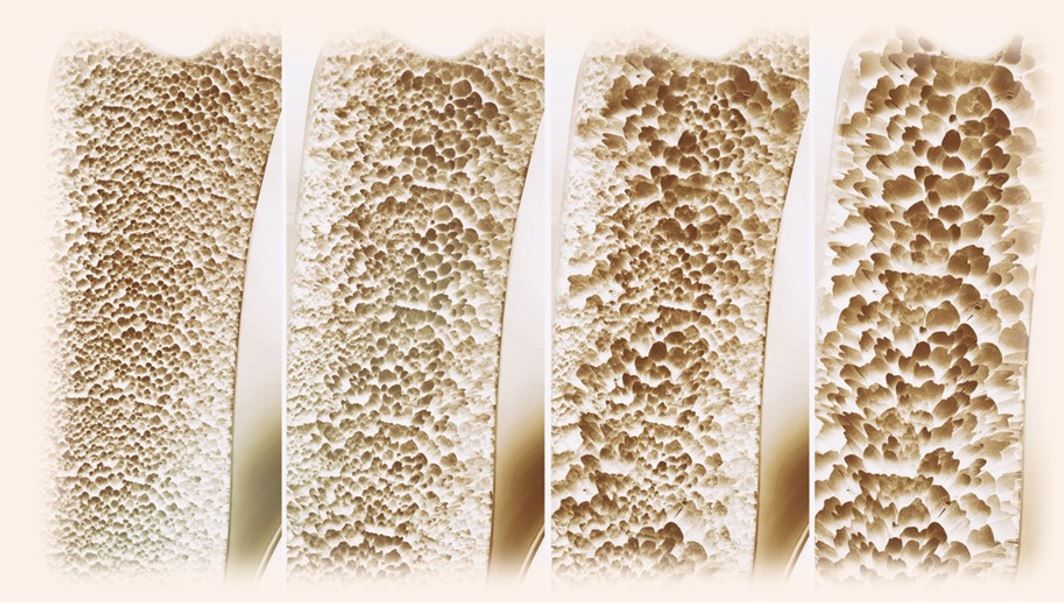Weight Loss Surgery May Compromise Bone Density and Strength in Adolescents, Young Adults
For adolescents and young adults with overweight or obesity, bariatric surgery is the most effective strategy to treat the disease and associated cardiometabolic complications. New research, however, suggests that the procedures may result in bone density changes that place these patients at risk for fracture later in life.
©Crevis/Shutterstock

Using biomechanical computed tomography (CT), investigators found that patients with an average age of 18 years who underwent sleeve gastrectomy (SG) experienced significant reductions in vertebral body strength and in average, cortical, and trabecular volumetric bone mineral density (BMD), compared to those who did not undergo the procedure.
Citing a lack of previous research on the subject as well as use of measurement technology prone to inaccuracies and unable to assess bone strength, Miriam A. Bredella, MD, MBA, professor of radiology at Harvard Medical School and vice chair of the Department of Radiology at Massachusetts General Hospital, and colleagues set out to investigate the effect of SG on bone strength of the lumbar spine by biomechanical CT analysis in adolescents and young adults with severe obesity.
Patient selection, evaluation. Inclusion criteria for participants were age 13 to 25 years; moderate-to-severe obesity (BMI ≥35 kg/m2) in adults; and BMI ≥120% of the 95th percentile for age and sex in adolescents.
Additional criteria to be considered for SG were an existing plan to undergo weight loss surgery, having a BMI of ≥35 kg/m2 and at least 1 obesity-related comorbidity, or a BMI ≥40 kg/m2. Exclusions were made for potential participants who were pregnant, had a history of medical disorders or use of medications known to affect bone metabolism, a history of smoking >10 cigarettes per day or of substance abuse per DSM-5, and body weight >200 kg.
Patients were evaluated at baseline, prior to surgery, and at 12 months post-surgery. Participants in the nonsurgical control arm also were examined at both points and received counseling on diet and exercise regimens to follow.
Also performed at baseline and follow-up visits were a helical CT of the lumbar spine (L1, L2) for analysis via biomechanical CT, and a single-slice MRI of the abdomen at the level of L4 and the mid-thigh for composition assessments at both visits. Effects of body composition on bone parameters were estimated using regression analysis and multivariable analyses were conducted to control for baseline and 12-month changes in BMI.
Final cohort. The final cohort enrolled numbered 87 participants who attended a baseline visit. Of this group, investigators assigned 39 patients to SG and 48 to nonsurgical management. Of the original 87 participants, 32 from the SG group and 40 from the nonsurgical group 72 completed the 12-month visit. Age, sex, and race distribution was comparable between the groups, according to the study, as were levels of calciotropic hormones, body composition, and biomechanical spine parameters. Investigators reported also that baseline weight and BMI were higher among participants in the SG group than in the nonsurgical control group.
FINDINGS
Bredella and colleagues found that participants in the SG group lost a mean of 34.3 (SD, 13.6) kg at 12 months after surgery while weight remained unchanged in the control arm (P<.001). Findings were similar for changes in BMI between groups, with a significant decrease among those who underwent surgery and no significant change among controls. The researchers also found significant reductions in both visceral and subcutaneous adipose tissue and thigh muscle area in the SG group compared with controls (P<.001).
Analysis of biomechanical CT parameters revealed decreases in bone strength, bending stiffness, and in mean and trabecular volumetric BMD among participants in the surgical vs nonsurgical groups (P<.001 for all).
In multivariable analyses adjusted for change in BMI, investigators found 12-month reduction in cortical BMD was significant among surgical participants compared with controls (P=.02). They also reported that the observed reductions in strength and trabecular BMD were associated with reductions in BMI, visceral adipose tissue, and muscle (P≤.03).
“Our study showed that sleeve gastrectomy in adolescents and young adults decreases bone strength and BMD of the lumbar spine 12 months after surgery compared with nonsurgical controls,” wrote investigators.
The researchers hope, according to Bredella, that the findings will raise awarness for the "importance of bone health after weight loss surgery," specifically so that clinicians will focus on young children's dietary composition, including adquate calcium and vitamin D, and on encouraging weight-bearing activity to build muscle mass.
Reference: Huber FA, Singhal V, Tuli S, et al. Biomechanical CT to assess bone after sleeve gastrectomy in adolescents with obesity: a prospective longitudinal study. J Bone Miner Res. 2023;10.1002/jbmr.4784. doi:10.1002/jbmr.4784